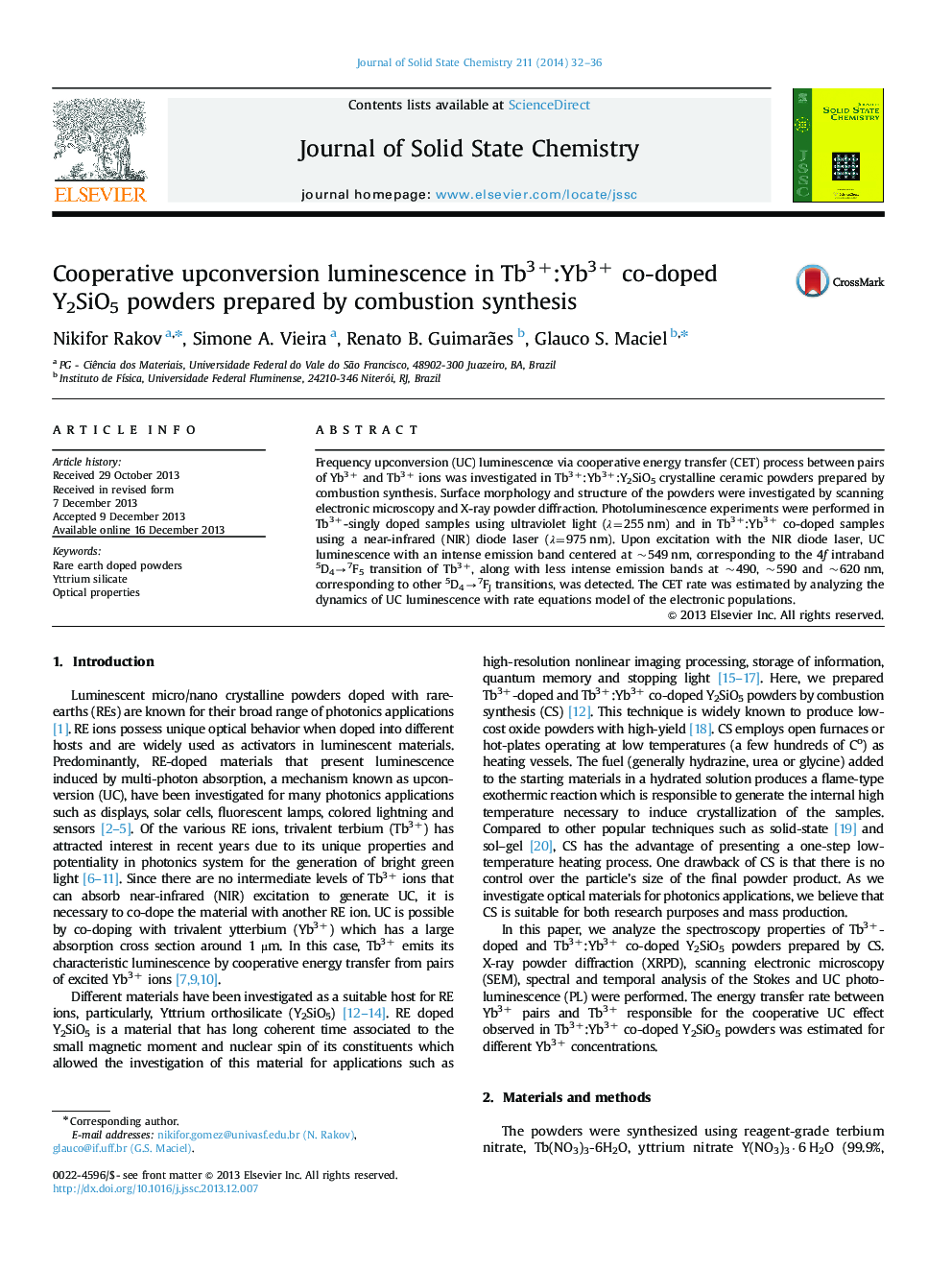| Article ID | Journal | Published Year | Pages | File Type |
|---|---|---|---|---|
| 1329005 | Journal of Solid State Chemistry | 2014 | 5 Pages |
•Yttrium orthosilicate (Y2SiO5) powders were prepared by combustion synthesis.•Cooperative upconversion is observed for the first time in Tb3+–Yb3+ doped Y2SiO5.•Energy transfer and back-transfer rates between Tb3+ and Yb3+ pairs were estimated.
Frequency upconversion (UC) luminescence via cooperative energy transfer (CET) process between pairs of Yb3+ and Tb3+ ions was investigated in Tb3+:Yb3+:Y2SiO5 crystalline ceramic powders prepared by combustion synthesis. Surface morphology and structure of the powders were investigated by scanning electronic microscopy and X-ray powder diffraction. Photoluminescence experiments were performed in Tb3+-singly doped samples using ultraviolet light (λ=255 nm) and in Tb3+:Yb3+ co-doped samples using a near-infrared (NIR) diode laser (λ=975 nm). Upon excitation with the NIR diode laser, UC luminescence with an intense emission band centered at ~549 nm, corresponding to the 4f intraband 5D4→7F5 transition of Tb3+, along with less intense emission bands at ~490, ~590 and ~620 nm, corresponding to other 5D4→7FJ transitions, was detected. The CET rate was estimated by analyzing the dynamics of UC luminescence with rate equations model of the electronic populations.
Graphical AbstractLeft: Cooperative upconversion luminescence spectra of three powder samples prepared by combustion synthesis. Right: The SEM image of the powder showing that it consists of agglomerated flake-like shaped particles of various sizes. Full scale bar is 20 μm.Figure optionsDownload full-size imageDownload as PowerPoint slide
